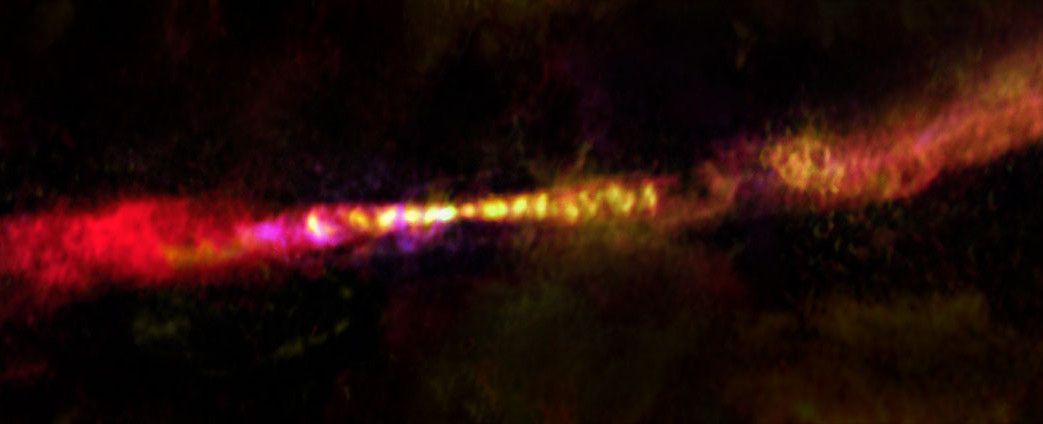

An energetic young star flickers to life in a new image from the European Southern Observatory (ESO). Taken by the ESO’s Atacama Large Millimeter/Submillimeter Array (otherwise known simply as ALMA), this remarkable image captures the star’s “first steps.”
The star’s environment—dubbed CARMA-7—boasts many intriguing features. The whole lot of them reside approximately 1,400 light-years from Earth toward the constellation of Serpens. Of course, the most striking are the jets, which are rippled, and almost perfectly symmetrical—extending from the protostar’s poles like interstellar beacons.
Astronomers believe that jets such as this are somewhat common with protostars, and are driven by gaseous outbursts from central stars.
According to the ESO, “These outbursts are triggered by material infalling onto the protostar from an orbiting disc. As the jets speed away from their infant star, they collide with interstellar material causing them to slow and spread out. One day, that material may collapse and form yet another generation of stars.”
However, since we can only see the jets from certain vantage points, it is difficult to ascertain how they are created, and how often they form. We do know that they are fast-moving, sometimes travelling at speeds that exceed a million miles per hour.
The larger area—a densely-packed stellar nursery known as the Serpens South Star Cluster—is home to around 30 other protostars; Many of them similar in size, mass and age. Being that it is such a large and dynamic starscene, it gives astronomers a unique perspective on star-formation—and the phase between protostar and main-sequence. (See a larger image here)